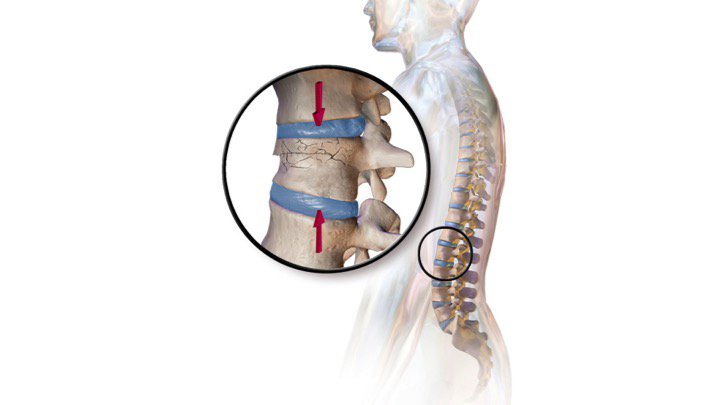

Bone graft: If the fracture does not heal, a surgeon will transplant a natural or synthetic bone to stimulate the broken bone.
#COMPRESSION BONE FRACTURE PROFESSIONAL#
Ultrasound therapy: A medical professional will apply low intensity ultrasound to the affected area.Treatments for non-unions and delayed unions include: Non-unions are fractures that fail to heal, while delayed unions are those that take longer to heal. Bone death (avascular necrosis): If the bone loses its essential supply of blood, it may die.
#COMPRESSION BONE FRACTURE SKIN#
Bone or bone marrow infection: In a compound fracture, bacteria can enter through a break in the skin and infect the bone or bone marrow.This can raise the risk of future deformity in the bone. Disruption of bone growth: If a childhood bone fracture becomes disrupted during healing, this may affect the typical development of that bone.Bone heals in the wrong position: A fracture may heal in the wrong position, or the bones may shift during the healing process.While bone fractures typically heal well with appropriate treatment, there can be complications, such as: If this happens, a person may not be able to bend that joint as well as before the injury. If the fracture occurs near or through a joint, there is a risk of permanent stiffness or arthritis. nonsteroidal anti-inflammatory drug useĪfter the bone has healed, it may be necessary to restore muscle strength and mobility to the affected area through physical therapy.Other factors that can affect bone healing include: The duration is contingent on which bone has become affected and whether there are any complications, such as a blood supply problem or an infection. intramedullary nails, or rods, placed in bone cavitiesįractures can take several weeks to several months to heal, depending on their severity.Once a medical professional has aligned the fracture, they will ensure it stays in place. However, in some instances, this may require surgery. In smaller fractures, a doctor can do this by manipulating the affected area externally. This involves lining up the ends of the broken bones. Therefore, treatment typically focuses on providing the injured bone with the best circumstances for healing, and ensuring optimal future function.įor the natural healing process to begin, a doctor will reduce the fracture. Often, they will order an X-ray, and in some cases, an MRI or CT scan, to fully assess the fracture.īone healing is a natural process that, in most cases, will occur naturally. They will then carry out a physical examination to reach a diagnosis. Transverse fracture: This is a straight break across the bone.Ī doctor will inquire about the circumstances that led to a person’s fracture.Stress fracture: Repeated stress and strain can fracture a bone.Spiral fracture: Here, at least one part of the bone twists during a break.Pathological fracture: This occurs when an underlying condition weakens the bone and causes a fracture.Oblique fracture: An oblique fracture is one that occurs opposite to a bone’s long axis.Longitudinal fracture: This is when the fracture extends along the length of the bone.Intra-articular fracture: This occurs when a fracture extends into the surface of a joint.Impacted fracture: When a bone fractures, a piece of the bone may impact another bone.Hairline fracture: This is a thin, partial fracture of the bone.



 0 kommentar(er)
0 kommentar(er)
